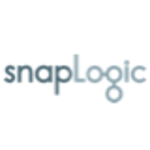What is our primary use case?
Once you get the data and you don't know about the structure of the data, then Glue is very helpful to estimate the structure, including where is the structure, and it'll identify everything for you. It has one component that is called Glue Crawler that is quite useful for this task. It will go through segments of your data and try to guess their structure. It pops out the structure, and you can modify it according to your convenience.
It is good to basically perform the ETL when your files are stored in the S3 bucket. Glue supports other external sources also. That said, most of the time, we have basically given our proposal to clients if the data is available in S3.
How has it helped my organization?
The solution helps organizations gain flexibility in defining the structure of the data.
You can define and then include the original data structure and decide what the required fills are or what other ones you can omit. You can perform certain processing tasks also, and you can basically apply the multiplying factor; you can do the cleanup, et cetera, on the fly with the Glue.
What is most valuable?
The Glue Crawler can have a set of connectors, so you can utilize those connectors to connect with the external databases, which may be on-premise in different networks or maybe locally on AWS. Basically, you can use the connector to fetch the data.
Once you have a data schema, you can start streaming or fetching the data in the particular format conversion. For example, suppose you have the text file, and you have Word in place or maybe in SQL, and you can use the connector on the fly to convert the database.
For batch processing, batch genetics, it is helpful for the ETL process.
The setup is easy.
The solution offers a free trial.
The solution can scale.
It's stable.
Users only pay for what they use once they have a license.
What needs improvement?
I haven't looked into Glue in terms of seeking out flaws. I've not come across missing features.
Buyer's Guide
AWS Glue
November 2025
Learn what your peers think about AWS Glue. Get advice and tips from experienced pros sharing their opinions. Updated: November 2025.
872,922 professionals have used our research since 2012.
For how long have I used the solution?
I've been dealing with the solution for two or three years. I have given a lot of proposals based on customer demand.
What do I think about the stability of the solution?
The solution is quite stable and reliable. There are no bugs or glitches. It doesn't crash or freeze. It is reliable.
What do I think about the scalability of the solution?
Typically, data analytics individuals use the solution. It's not for an entire organization.
It's a scalable solution. I'd rate it ten out of ten.
We do have plans to increase usage. We are in the process of moving many things to the cloud, and if they move onto AWS, they'll need Glue.
How are customer service and support?
I've never been in touch with technical support. I can't speak to how helpful or responsive they are.
How was the initial setup?
The solution is very straightforward to set up and implement.
I'd rate the ease of deployment at an eight or nine out of ten. However, it all depends on the circumstances.
The deployment only takes two to three minutes. It's very fast.
Using the console, you have different sections of AWS Glue You can go and specify the input data source and output target data place. Then you need to specify the transformation. If you want to do the filtering, et cetera, you have to specify. You have the blueprint of transformation functions available also, and you can select from there and then just run it.
What about the implementation team?
I've only just explored the solution. It has not been deployed yet.
What's my experience with pricing, setup cost, and licensing?
When you are just learning and testing the solution, it is free. I cannot speak to the full cost beyond that, as I am just experimenting with the product. They do offer it to users for a limited time to try for free, however.
My understanding is you only pay for what you use, so pricing would vary based on that. You don't need to maintain a cluster and it is serverless.
There are no extra costs beyond a standard license fee.
What other advice do I have?
We are using the latest version of the solution. The solution runs on the cloud and is serverless.
It's a good solution to use when people are not exporting analytics. If you want to perform some ETL on your data and the data is complex, then you should go for Glue. It is easy to set up.
I'd rate the solution ten out of ten.
Which deployment model are you using for this solution?
Public Cloud
Disclosure: My company has a business relationship with this vendor other than being a customer.






















